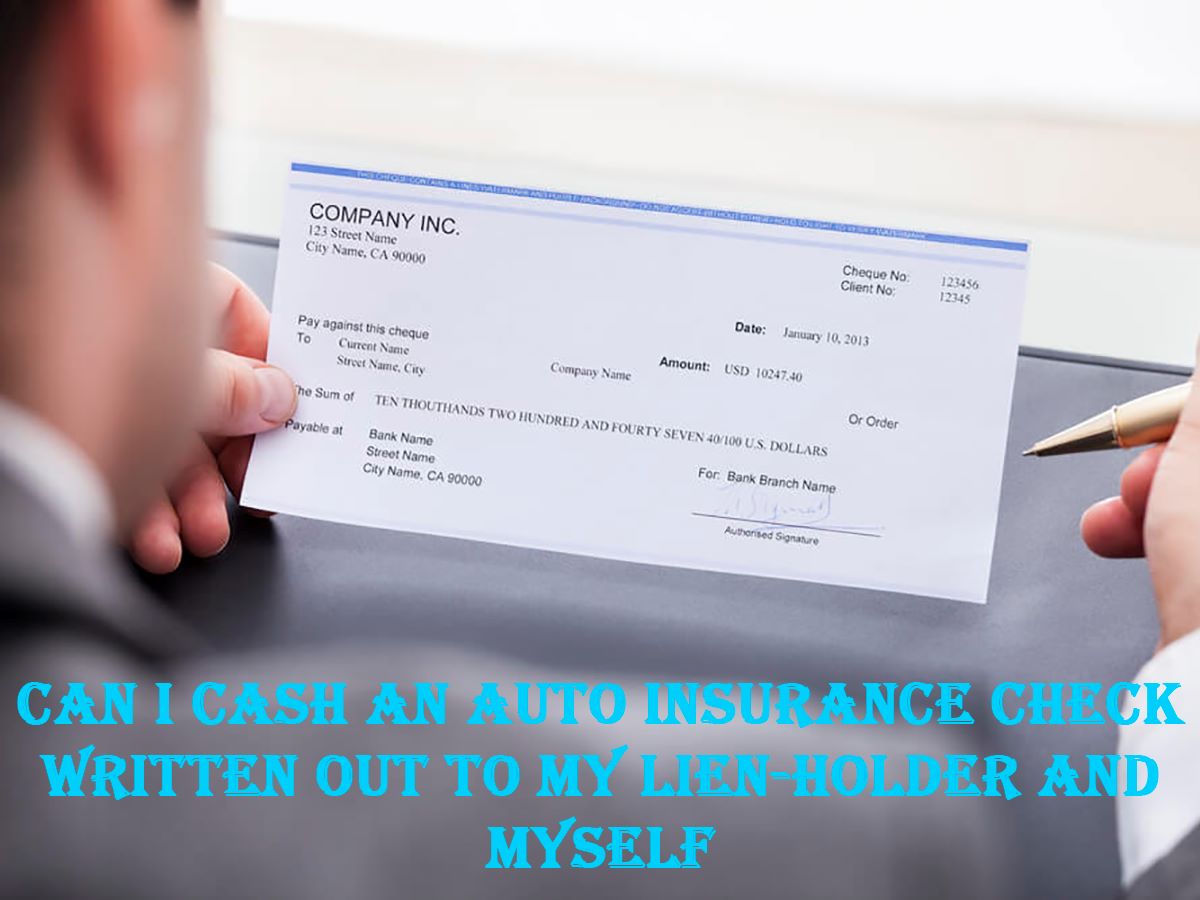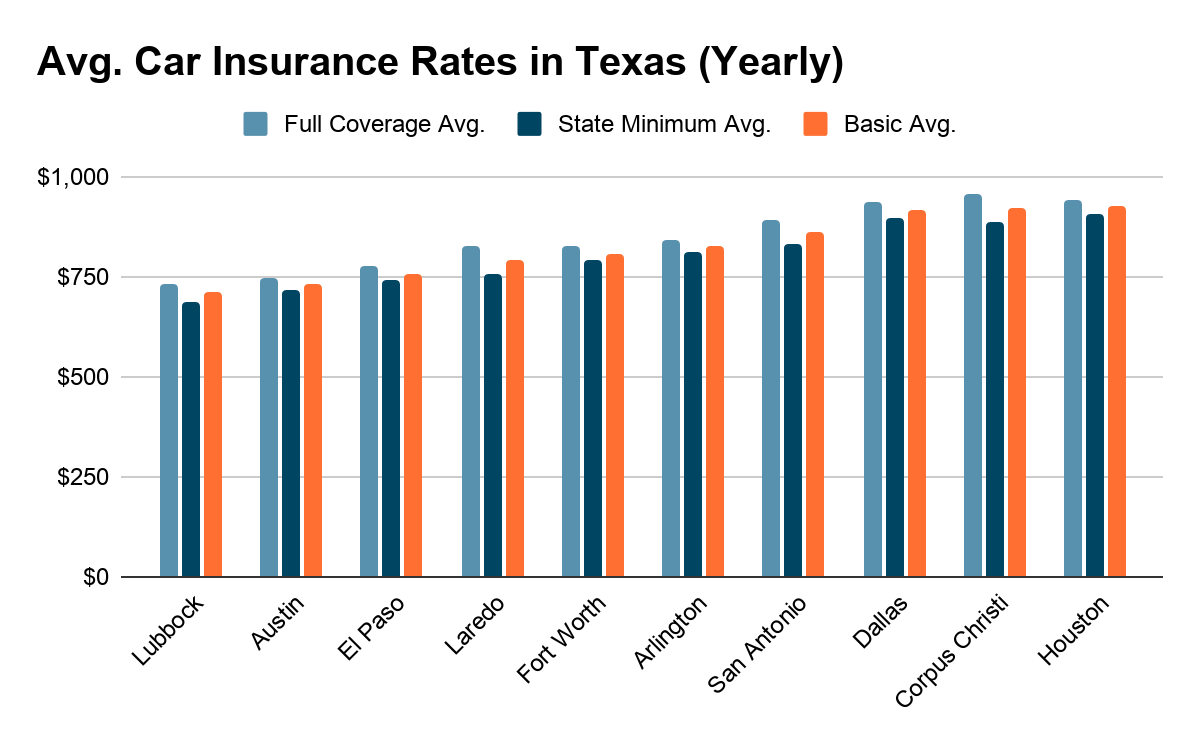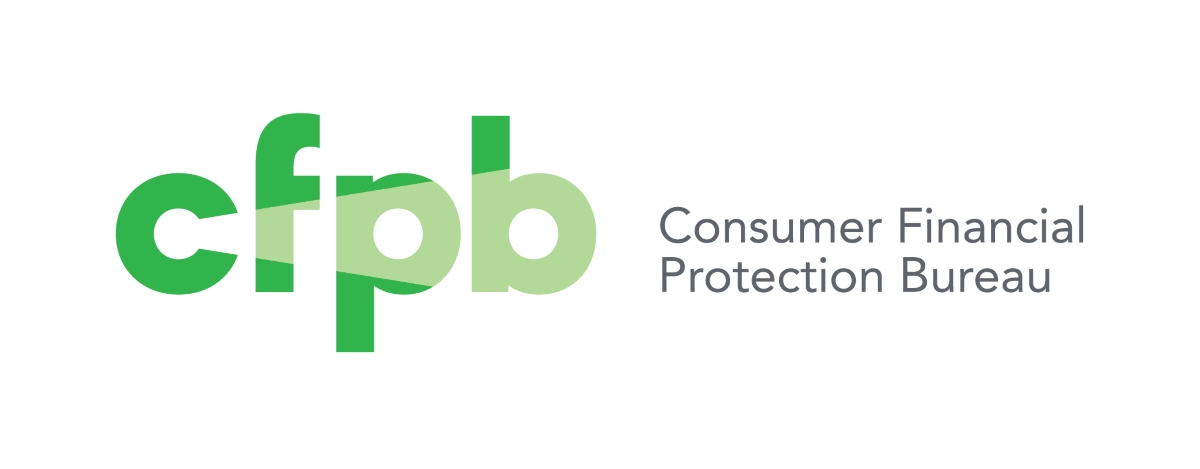Home>Finance>How To Cash An Insurance Check Without A Mortgage Company


Finance
How To Cash An Insurance Check Without A Mortgage Company
Published: November 17, 2023
Learn how to cash an insurance check without involving a mortgage company and take control of your finances. Empower yourself with practical finance tips and strategies.
(Many of the links in this article redirect to a specific reviewed product. Your purchase of these products through affiliate links helps to generate commission for LiveWell, at no extra cost. Learn more)
Table of Contents
- Introduction
- Understanding the Insurance Check
- Checking Your Mortgage Agreement
- Contacting Your Mortgage Company
- Requesting a Waiver or Endorsement
- Obtaining a Two-Party Check
- Cashing the Insurance Check on Your Own
- Depositing the Insurance Check Into Your Bank Account
- Providing Documentation to Your Mortgage Company
- Conclusion
Introduction
When you file an insurance claim and receive a check as reimbursement for damages or losses, it’s typically straightforward to cash or deposit the check. However, things can become a bit more complicated if you have a mortgage on the property.
Many homeowners who have a mortgage are required by their mortgage company to involve them in the process of cashing an insurance check. The mortgage company wants to ensure that any repairs or rebuilding done with the insurance funds are completed to protect their investment.
In this article, we’ll discuss how to cash an insurance check without involving your mortgage company. We’ll explore the steps involved in understanding the insurance check, checking your mortgage agreement, contacting your mortgage company, and requesting a waiver or endorsement. Additionally, we’ll discuss the option of obtaining a two-party check, cashing the insurance check on your own, and depositing the insurance check into your bank account.
Understanding the process and requirements can help you navigate this situation and access the funds you need to repair and restore your property. Let’s dive in and explore your options for cashing an insurance check without the involvement of your mortgage company.
Understanding the Insurance Check
Before you can explore options for cashing your insurance check without involving your mortgage company, it’s important to understand the structure and purpose of the check itself. Insurance checks are typically issued by your insurance company as reimbursement for damages or losses covered by your policy.
The insurance check will generally be made payable to both you and your mortgage company, listing both parties as the payees. This is because the mortgage company has a financial interest in your property and wants to ensure that the funds are used for repairs or rebuilding.
Typically, insurance checks are issued in the name of the insured homeowner and the mortgage company. The reason behind this is that the mortgage company has a legal claim to the property and wants to ensure that repairs are made to maintain the value and integrity of the property.
When you receive the insurance check, it’s crucial to carefully review the details. Take note of the amount, the payees listed, and any instructions or requirements provided by your insurance company. Make sure you understand the purpose of the check, whether it’s for a specific repair or a general reimbursement.
Keep in mind that insurance checks may have an expiration date. It’s important to act promptly and efficiently to ensure that you can access the funds within the required timeframe. If the check does expire, you may need to contact your insurance company to request a reissue.
Understanding the nature of the insurance check and its purpose will help you navigate the process of cashing it without involving your mortgage company. With this knowledge, you can move forward in exploring your options and finding a solution that best suits your needs.
Checking Your Mortgage Agreement
Once you have a clear understanding of the insurance check, the next step is to review your mortgage agreement. Your mortgage agreement is a legal document that outlines the terms and conditions of your loan, including any specific requirements related to insurance claims and reimbursements.
It’s essential to check your mortgage agreement to determine whether it includes provisions for handling insurance claim proceeds. Look for any language that outlines the process for endorsing or cashing insurance checks and whether you’re required to involve your mortgage company.
If your mortgage agreement does explicitly state that you need to involve your mortgage company, it’s important to understand the reasoning behind this requirement. Mortgage companies want to protect their financial interest in the property and ensure that any repairs or rebuilding are done to maintain the value of the home.
However, it’s worth noting that not all mortgage agreements have strict requirements for involving the mortgage company in the cashing of insurance checks. Some agreements may have more flexibility, allowing you to handle the process independently.
By carefully reviewing your mortgage agreement, you can determine whether involving your mortgage company is a mandatory requirement or if you have the option to cash the insurance check on your own. This information will help guide you in the next steps of the process.
Contacting Your Mortgage Company
Once you have reviewed your mortgage agreement and determined whether involving your mortgage company in the cashing of your insurance check is mandatory or optional, the next step is to contact your mortgage company. This step is crucial to ensure you are aware of their specific requirements and to discuss potential options for cashing the check.
Reach out to your mortgage company through their designated contact channels, such as their customer service phone number or email. When contacting them, be prepared to provide your loan information, including your mortgage account number, property address, and insurance claim details.
During the conversation with your mortgage company representative, explain that you have received an insurance check and would like to discuss the process for cashing it. If your mortgage agreement mandates their involvement, inquire about their specific procedures and any necessary documentation they require.
On the other hand, if your mortgage agreement allows for independent handling of insurance checks, you can inform the representative that you would like to proceed without their endorsement. They may still request documentation or information to keep on file, but you can clarify that you intend to cash the check without their participation.
Keep in mind that each mortgage company may have different policies and requirements, so it’s essential to communicate with them directly to understand their specific process. Be polite, patient, and diligent in gathering all the necessary information and instructions.
By contacting your mortgage company and discussing the situation, you can ensure that you are aware of any requirements or restrictions associated with cashing your insurance check. This communication will help you navigate the process smoothly and minimize any potential issues or delays.
Requesting a Waiver or Endorsement
If your mortgage agreement requires the involvement of your mortgage company in cashing the insurance check, but you wish to explore alternative options, you can request a waiver or endorsement from your mortgage company. This involves obtaining their permission to cash the check independently.
To request a waiver or endorsement, you will need to provide your mortgage company with detailed information about the insurance claim, including the amount of the check, the reason for the claim, and any supporting documentation from the insurance company.
Write a formal letter to your mortgage company, clearly explaining your request for a waiver or endorsement. Include your loan information, property address, insurance claim details, and a concise explanation of why you are seeking the waiver or endorsement.
Explain any extenuating circumstances, such as urgent repairs that need to be completed promptly or the need for immediate access to the funds. Emphasize your commitment to restoring the property to its original or improved condition and your willingness to provide documentation or proof of the repairs done.
Attach any supporting documents that may strengthen your case, such as estimates or invoices from contractors, photographs of the damages, or detailed repair plans. These documents can demonstrate that you are taking responsible and proactive steps to address the insurance claim.
Request a response within a reasonable time frame, such as two weeks, and provide your contact information for the mortgage company to reach you. Be professional, polite, and assertive in your letter, clearly stating your intention to cash the insurance check independently while maintaining the integrity and value of the property.
By requesting a waiver or endorsement, you are seeking the mortgage company’s permission to handle the insurance funds without their direct involvement. If your request is approved, you will have the freedom to cash the check independently and proceed with the necessary repairs or restoration.
Obtaining a Two-Party Check
If your mortgage company is unwilling to grant a waiver or endorsement, there is still an option available to cash the insurance check while involving them. This option involves obtaining a two-party check, which includes both your name and your mortgage company’s name as payees.
To obtain a two-party check, you will need to contact your insurance company and inform them of your mortgage company’s requirement. Request that they issue the insurance check in both your name and your mortgage company’s name. Be prepared to provide the necessary account information for your mortgage company.
Once the two-party check is issued, it will need to be endorsed by both you and your mortgage company in order to be cashed. Contact your mortgage company to coordinate the endorsement process. They may require you to visit their branch office in person to sign the check or have specific procedures for endorsement.
Keep in mind that the endorsement process can vary depending on the policies and requirements of your mortgage company. Be prepared to provide identification and any additional documentation requested to complete the endorsement. Follow their instructions carefully to ensure a smooth process.
Once the check is endorsed by both parties, you can proceed to a bank or financial institution to cash or deposit it. Some banks may require both parties to be present, while others may allow you to handle the transaction individually. Contact your bank in advance to confirm their specific requirements.
Remember that cashing a two-party check may result in some delays or additional fees, depending on the policies of the bank and your mortgage company. Be prepared to provide any necessary information or documentation requested by the bank to expedite the process.
Obtaining a two-party check provides a solution for cashing your insurance check while involving your mortgage company. Although it may require some additional steps and coordination, it allows you to access the funds and proceed with the necessary repairs or restoration.
Cashing the Insurance Check on Your Own
If your mortgage company does not require their involvement in the cashing of the insurance check, you have the option to cash the check on your own. This allows you to have direct control over the funds and proceed with the necessary repairs or restoration independently.
First, you will need to endorse the insurance check. Flip the check over and sign your name on the back. You may also need to write a note stating “For deposit only” to ensure that the funds are deposited into your designated account.
Next, you can proceed to a bank or financial institution to cash the check. Bring proper identification, such as a driver’s license or passport, along with the endorsed check. Speak to a bank teller and inform them that you would like to cash the insurance check.
Some banks may charge a fee for cashing the check, especially if you do not have an account with them. It’s always a good idea to inquire about any fees beforehand to avoid any surprises. If the fee is significant, you may consider opening an account or exploring other financial institutions that offer more favorable terms.
When cashing the insurance check, it’s important to keep track of the funds and allocate them accordingly for the necessary repairs or restoration. Create a budget and plan for the use of the insurance proceeds, ensuring that each expense is accounted for and necessary documentation is retained.
Be sure to keep records of any expenses related to the repairs or restoration, such as contractors’ invoices, receipts for materials, and any other relevant documents. These records will be important for future reference and may be required by your mortgage company or for tax purposes.
Cashing the insurance check on your own provides you with the freedom and control to manage the funds without involving your mortgage company. It allows for a streamlined process, giving you the ability to quickly access and allocate the insurance proceeds for the necessary repairs or restoration.
Depositing the Insurance Check Into Your Bank Account
If you prefer to deposit the insurance check into your bank account rather than cashing it, there are a few steps you can follow to ensure a smooth deposit process. Depositing the check allows you to have the funds readily available for any necessary expenses related to repairs or restoration.
Start by endorsing the insurance check. Turn the check over and sign your name on the designated line on the back. You may also need to include a note stating “For deposit only” to ensure that the funds are deposited into your account.
Next, visit your bank branch or use your bank’s mobile app to deposit the check. If visiting the bank in person, bring the endorsed check along with your identification, such as a driver’s license or passport. Fill out a deposit slip with your account information and the amount of the insurance check. Submit the deposit slip and the check to a bank teller, who will process the deposit for you.
If you prefer to deposit the check remotely using your bank’s mobile app, open the app and choose the option to make a deposit. Follow the prompts to input the necessary information, such as your account number and the amount of the insurance check. You will usually have to take photos of the front and back of the endorsed check using your mobile device’s camera. Once the deposit is submitted, the funds will be credited to your account.
Ensure that you keep the insurance check in a safe place for a reasonable period of time, such as several weeks, before disposing of it. This is just to ensure that the deposit has been successfully processed and there are no issues with the funds.
After the insurance check is successfully deposited, monitor your bank account to verify that the funds have been credited. It’s a good practice to review your bank statements or online banking regularly to track the deposit and any subsequent transactions.
By depositing the insurance check into your bank account, you have the convenience of accessing the funds as needed while maintaining a transparent record of the transaction. This method provides flexibility and ease in managing the insurance proceeds for the required repairs or restoration.
Providing Documentation to Your Mortgage Company
Even if your mortgage company does not require their involvement in cashing the insurance check, it is still important to keep them informed and provide them with documentation regarding the insurance claim and any repairs or restoration being done. This helps maintain transparency and ensures that your mortgage company is aware of the progress and actions taken with the insurance funds.
Start by gathering all the necessary documentation related to the insurance claim. This includes the original insurance policy, the insurance claim documentation, estimates for repairs, invoices from contractors, and any photographs or supporting evidence of the damages.
Compile these documents into a comprehensive package that clearly presents the details of the claim and the planned repairs or restoration. Organize the documents in a logical manner, such as by type or by chronological order, to make it easier for your mortgage company to review.
Prepare a cover letter or document summarizing the insurance claim, the amount of the insurance check, and the specific repairs or restoration being undertaken. Provide a clear timeline or schedule for the completion of the work and specify any milestones or checkpoints that your mortgage company may be interested in.
Once you have the package of documents ready, contact your mortgage company and inform them that you would like to provide them with an update on the insurance claim and the documentation related to it. Depending on their preferred method of communication, you may need to submit the documents electronically or mail them physically.
During the process, it’s important to maintain open lines of communication with your mortgage company. Be prepared to address any questions or concerns they may have and provide any additional information they request. Respond promptly to their inquiries to keep the process moving smoothly.
By providing documentation to your mortgage company, you demonstrate your commitment to responsibly handling the insurance funds and keeping them informed. This proactive approach helps build trust and maintains a positive relationship with your mortgage company throughout the repair or restoration process.
Conclusion
Cashing an insurance check without involving your mortgage company can be a complex process, but it is not impossible. By understanding the insurance check, checking your mortgage agreement, and contacting your mortgage company, you can navigate the situation effectively.
If your mortgage agreement requires their involvement, you have the option to request a waiver or endorsement. Submit a formal request, providing detailed information about the insurance claim and emphasizing your commitment to restoring the property. If approved, you can cash the check independently.
In cases where involving your mortgage company is mandatory or preferred, you can explore the option of obtaining a two-party check. Coordinate with your insurance company and mortgage company to obtain the necessary endorsements and cash or deposit the check as needed.
If you have the independence to cash the insurance check on your own, carefully endorse the check and visit your bank to complete the transaction. Alternatively, you can deposit the insurance check into your bank account, enabling you to have easy access to the funds for repairs or restoration.
Regardless of whether your mortgage company is involved in the cashing process or not, it is essential to maintain open communication and provide them with relevant documentation. This demonstrates your responsible approach and ensures transparency in the use of the insurance funds.
Remember to keep records of all expenses related to the repairs or restoration, as they may be required by your mortgage company or for tax purposes. Understand the policies of your bank and mortgage company, be prepared for any potential fees, and follow their instructions to avoid any delays or complications.
Ultimately, cashing an insurance check without involving your mortgage company requires thorough understanding, effective communication, and adherence to the necessary procedures. By following these steps, you can access the funds necessary to restore your property and move forward with confidence.














